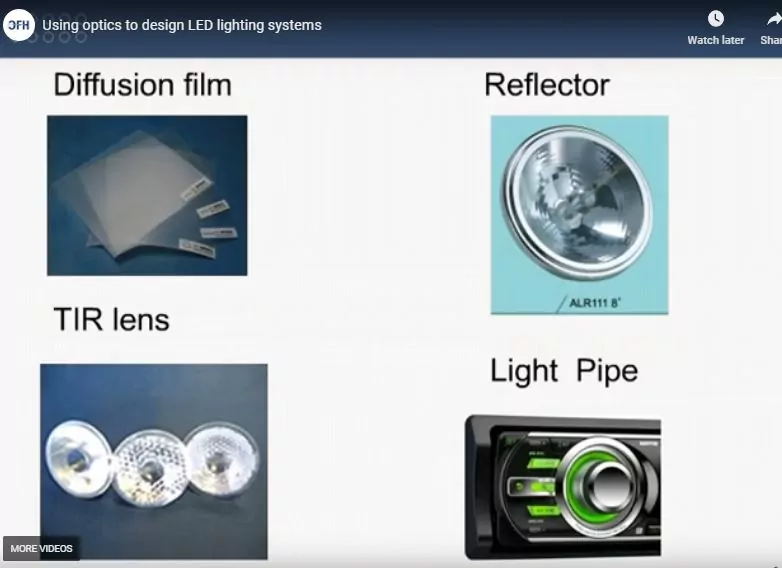Video On Using LED Optics

New video about using LED optics in the design of lighting systems Need help? Click here to learn more about our custom illumination optic design services.
What we’re reading: 3D display advances

Hello from Optics for Hire, where the topic of 3D display has been coming up even more than usual. At the moment, the clouds over Arlington are trying to figure out how much snow to deposit on Mass Ave. Feels like the right mood to share a few of the things crossing my desk: Good […]
Reducing speckle noise in 3D mapping

Laser sources are typically used in 3D depth mapping of random and pseudo-random pattern projectors. This is because laser sources are coherent enough to diffract through a diffractive optical element (DOE), unlike non-coherent sources (LED), which can’t. The downside of highly coherent lasers is related to the inherent laser speckle effect which reduces the accuracy […]
Lens attachments for smartphone cameras

In the past several years, smartphone cameras have taken a big step forward. The image quality of the best iPhone, Samsung, and HTC cameras is equivalent to low-priced Canon, Nikon, Pentax, and Sony DSLR cameras. Many prefer taking photos with smartphones due to their convenience, compact size, network connection, and huge array of applications. Smartphone […]
Distinctive design features of infrared optical systems

A designer of an IR optical system needs to account for key specifications that greatly impact the complexity of the device construction and its production cost. The most important requirements are described below. infrared optical systems The maximum achievable theoretical resolution in wavelength infrared region The maximum resolution is estimated with the help of Rayleigh […]
Questions and Answers optical resolution

In the world of imaging and optics, achieving clarity and precision is paramount. Whether it’s for quality control, machine vision, or barcode reading, understanding the intricacies of image resolution plays a vital role in ensuring the success of various applications. In this blog post, we delve into an insightful email exchange between us and one […]